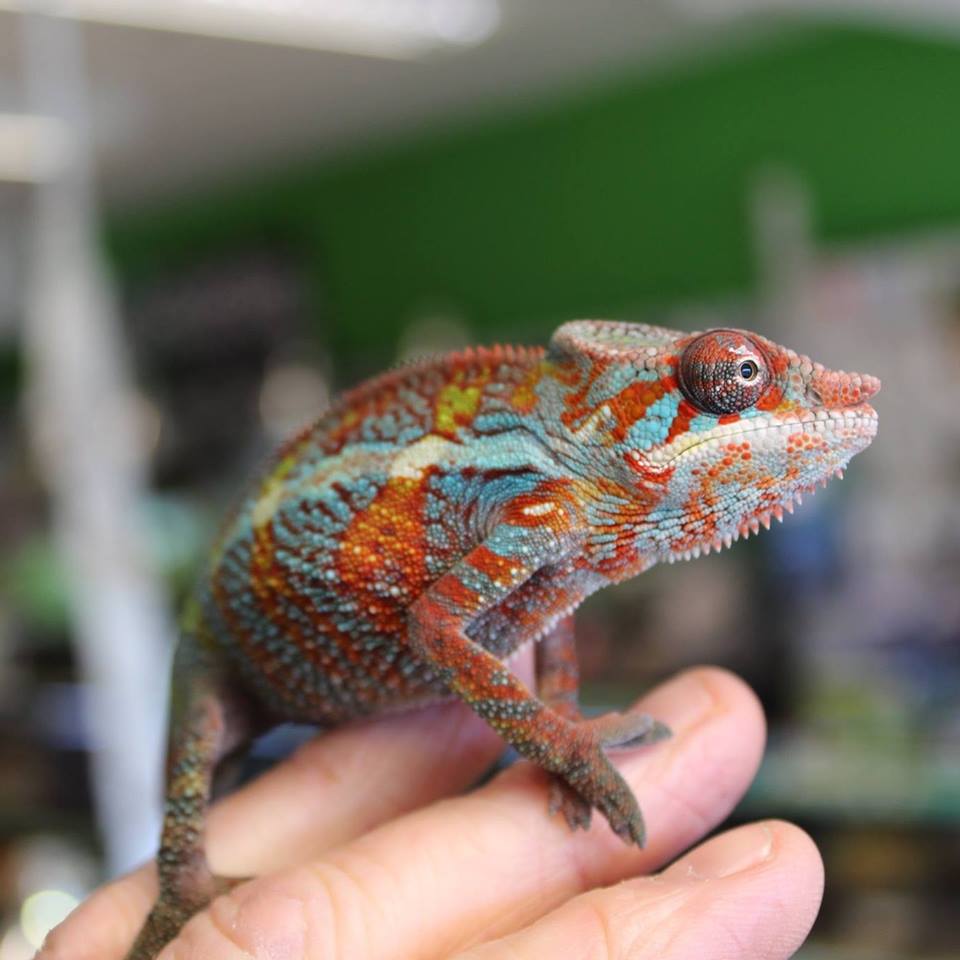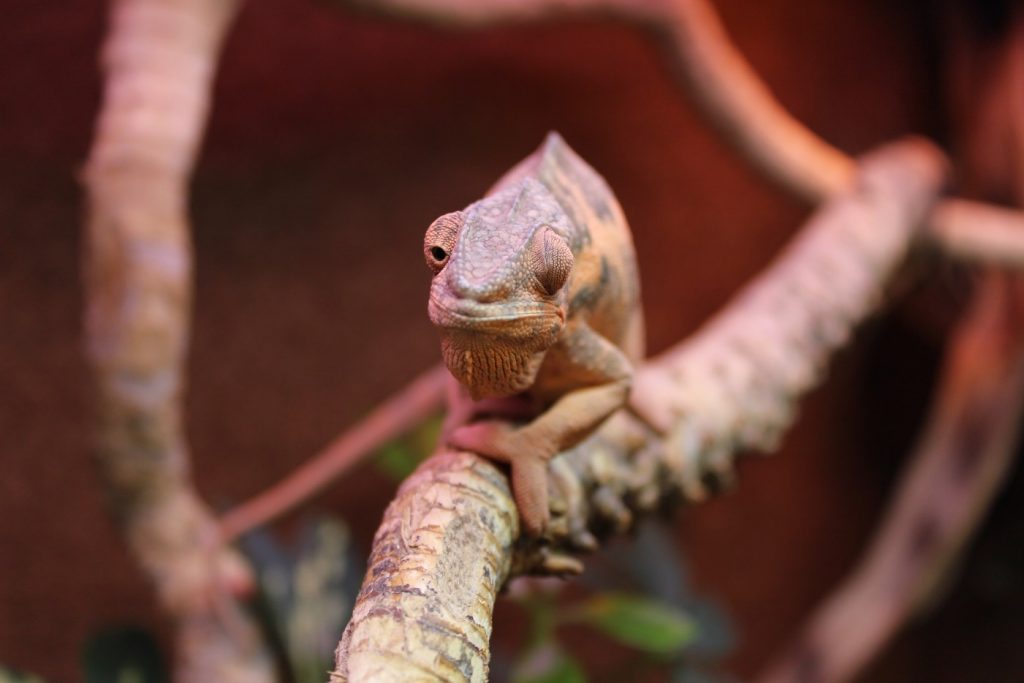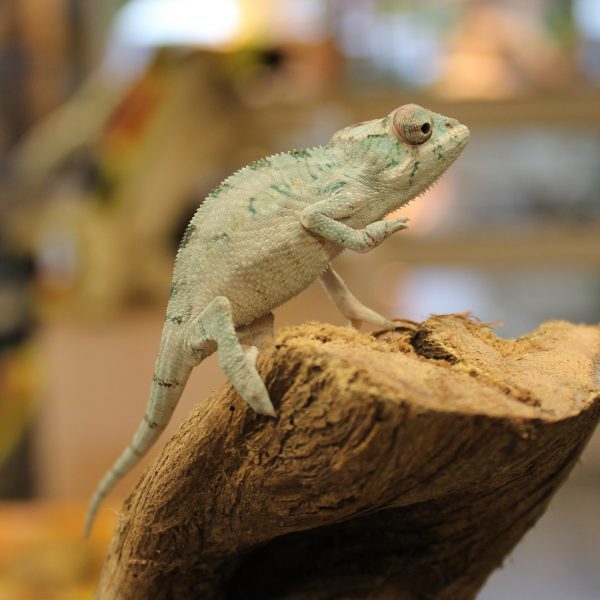Copyright 2021 Evolution Reptiles
All rights reserved.
Copyright 2025 Evolution Reptiles
All rights reserved.
All rights reserved.
One of the most colourful lizard species in the world, the panther chameleon (Furcifer pardalis) used to be considered overly delicate and difficult to keep. And when the trade relied on wild-caught animals, this was largely true. However, thanks to the efforts of many dedicated reptile keepers, the panther is now regularly available as a captive bred animal that thrives in a well-prepared pet environment.

Panther chameleons originate from coastal regions and islands off central-eastern, north-eastern, northern and north-western Madagascar. They are found in primary rainforest, and secondary growth scrub as well as farmland. This adaptability makes them one of the best pet species of chameleon available today. Big, bold and beautiful, the males are one of the most brightly coloured lizards you’ll ever see. The females are more of a uniform salmon pink, although some are more patterned than others. Depending on where the original stock came from you find different colours on the males; Nosy Be males are often bright blue, Ambilobes tend to have the brightest mix of colours, and Ankaramys are pink!
Males reach up to 51cm(20”), although they are typically 30cm (12”) to 45cm (18”). Females are somewhat smaller at 18 to 23cm (7 to 9”). The boys are usually recommended as pets over the girls; boys are larger and much more colourful, and there is no chance of the reproductive disorders that can threaten the health of a female chameleon. Average lifespan is 6 to 8 years, with males tending to reach higher ages than females. In the wild they reach a maximum age of 2 years! (Durrell Wildlife Conservation Trust)

The first step in keeping your chameleon happy and healthy is to provide them with the right housing. Screen enclosures are often recommended due to their excellent ventilation, but in a domestic situation it can be extremely difficult to keep temperatures and humidity high enough. Tall wooden vivariums contain heat and humidity well, but tend to be very poorly ventilated. A good compromise are the glass terrariums currently available; these have mesh tops and additional vents lower down, which allow for a good flow of air through the whole space. They can work very well if you want to use live plants, as they take no damage from the high humidity and are very easy to disinfect.
The other vital ingredients are heat and light; a good quality bulb that supplies UVB, and a white basking spotlight that allows the chameleon to thermoregulate. The UVB can be provided either via a fluorescent strip, or one of the bulbs that combines heat and light such as a mercury vapour, or metal halide. Compact UV bulbs (the ones that look like energy saving domestic bulbs) are NEVER suitable for chameleons; they do not provide enough UV over a large enough area.

The chameleon should have plenty of cover, whether artificial or real. The rise of bio active systems in vivaria suits chameleons very well; they tend to be more relaxed when there are a lot of plants to hide behind or in, and live plants not only help to keep background humidity high, they also help to purify the air. The other big advantage of having a lot of cover is that it helps the chameleon to regulate their exposure to UVB and heat.
A good substrate to use in the bottom of the enclosure will help to keep the humidity slightly higher than background, and be fine enough to not cause the chameleon a problem should it happen to ingest any. Coir fibre works very well, as do the various bio-active mixes we have currently available.
Panthers will eat anything that moves that they can fit in their mouths! They are more than happy to live on a diet of easily obtainable captive bred feeder insects (crickets, locusts, mealworms, wax worms, cockroaches), and they won’t say no to the occasional moth or spider. Make sure that your feeder insects are well fed with a varied vegetable diet (read our gut loading blog), and dusted with either a calcium powder or a good quality multivitamin/multimineral powder. We find that a good regime is to use the multivitamin powder twice a week, and the calcium powder every day. That way, the food always has dust on it – and your chameleon doesn’t get into the bad habit of being a fussy feeder!
Common name: Panther chameleon
Scientific Name: Furcifer pardalis
Location: Madagascar
Habitat (wild): Rainforest, farmland and secondary growth scrubland
Captive environment: Tall vivarium well furnished with climbing areas and cover
Preferred temperature range: daytime hot spot of 35ºC under the basking light, background ambient of 30ºC, cool end of 25ºC. Temperature can drop to 20ºC at night.
UVB: 5% or 7% UVB fluorescent tube or metal halide bulb only with lots of shady areas within the vivarium
Ferguson Zone: Zone 2
Substrate: Coir fibre or bio-active
Lifespan: 6 to 8 years
Copyright 2021 Evolution Reptiles
All rights reserved.